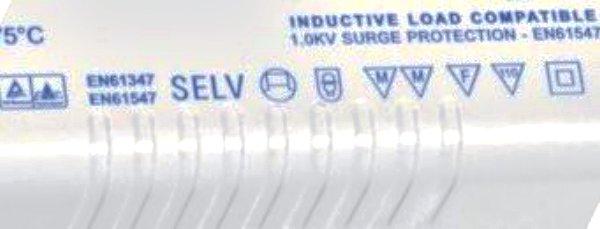I often find myself looking at the various symbols on electrical/electronic items and wondering what they all mean. A good example is an ELV lighting transformer/PSU, such as:
Apart from the 'double insulation' one, I'm not certain what any of them mean, although I think the one with intersecting circles and a line probably indicates input/output isolation. Try as I may, I've not been able to find where these symbols derive from, so I have not been able to find a 'key' to them. So, can anyone tell me where/how to find such a 'key' and/or explain what the ones in the above piccie actually mean. Ta!
Kind Regards, John.
Apart from the 'double insulation' one, I'm not certain what any of them mean, although I think the one with intersecting circles and a line probably indicates input/output isolation. Try as I may, I've not been able to find where these symbols derive from, so I have not been able to find a 'key' to them. So, can anyone tell me where/how to find such a 'key' and/or explain what the ones in the above piccie actually mean. Ta!
Kind Regards, John.


